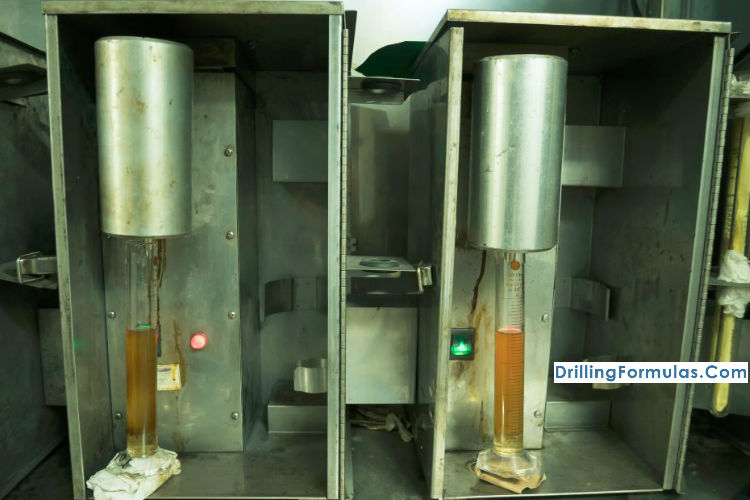
Oil Water Ratio (OWR) is a figure representing the fraction of oil and water in oil based drilling mud. Generally speaking, it is a ratio between the percent oil in liquid phase and the percent water in liquid phase. In order to determine OWR, volume of oil/water/solid in drilling mud comes from a retort analysis. A sample of oil based mud is controlled burnt in a retort kit at required temperature. When the mud is heated, water and oil will be extracted out and solid is left in the retort kit. The retort analysis report shows percentage of each component by volume so we use data from the retort analysis to determine oil water ratio.
The formulas below demonstrate how to calculate oil water ratio from retort data.
a) % oil in liquid phase = (% by volume oil x 100) ÷ (% by volume oil + % by volume water)
b) % water in liquid phase = (% by volume water x 100) ÷ (% by volume oil + % by volume water)
c) Result: The oil/water ratio equals to the percent oil in liquid phase and the percent water in liquid phase.
Example: Determine oil water ratio from following information
Data from a retort analysis:
% by volume oil = 56
% by volume water = 14
% by volume solids = 30
Solution:
a) % oil in liquid phase = (56 x 100) ÷ (56+14)
% oil in liquid phase = 80
b) % water in liquid phase = (14 x 100) ÷ (56+14)
% water in liquid phase = 20
c) According to this retort report, the oil/water ratio equals to 80/20.
Ref books: Lapeyrouse, N.J., 2002. Formulas and calculations for drilling, production and workover, Boston: Gulf Professional publishing.
Bourgoyne, A.J.T., Chenevert , M.E. & Millheim, K.K., 1986. SPE Textbook Series, Volume 2: Applied Drilling Engineering, Society of Petroleum Engineers.
Mitchell, R.F., Miska, S. & Aadny, B.S., 2011. Fundamentals of drilling engineering, Richardson, TX: Society of Petroleum Engineers.









